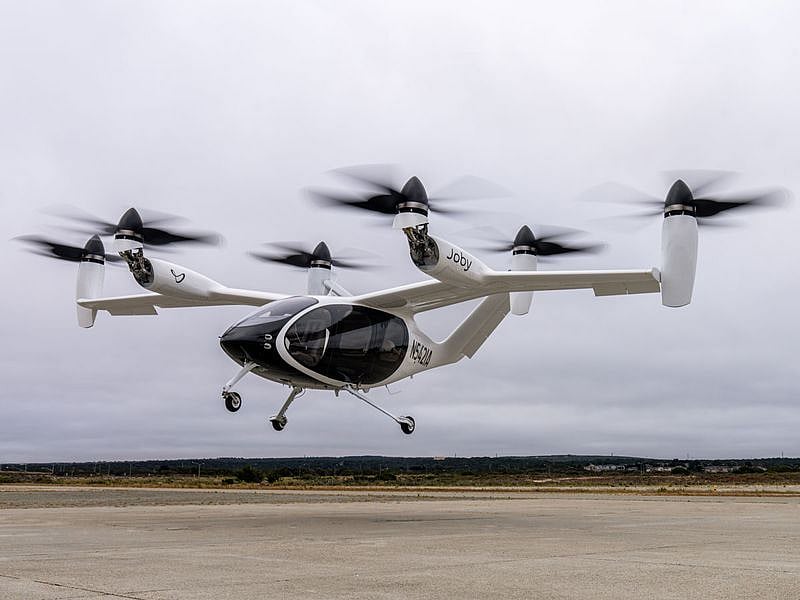Jobs outlook: Up to 60,000 pilots needed in air taxi boom by 2028
FAA rules mandate specialised training, including simulators for single-pilot air taxi

The skies above us are about to change. Thousands of specialised electric vertical take-off and landing (eVTOL) air taxis are expected to be delivered.
Who would fly them?
Tens of thousands of pilots would be needed worldwide to fuel this new aviation revolution, industry estimates show.
As of October 2025, the urban air mobility (UAM) industry has already shifted from prototypes to real-world testing and partnerships.
Commercial launches are targeted for late 2025 and 2026 in key markets like the US, UAE, and Japan.
Adoption
The air taxi sector, often referred to as urban air mobility (UAM), is experiencing explosive growth. Regulatory progress and infrastructure investments are accelerating adoption.
Projections paint a bold picture: from a low of 19,000 to a high of 60,000 eVTOL pilots needed by 2030, depending on industry estimate.
This skyrocketing demand heralds a seismic shift, as electric air taxis redefine the workforce of tomorrow.
Challenges remain, specifically in pilot training, airspace integration and vertiports.
By the numbers
The emerging eVTOL air taxi industry, having undergone extensive safety and flight tests, could start commercial operations from as early as 2026.
This is expected to create a substantial demand for pilots, with following industry estimates:
KPMG estimates that over 19,000 eVTOL pilots may be needed globally by 2030 just in the early growth phase.
In comparison, Aviation Week’s more conservative forecast projects about 1,000 eVTOL aircraft by 2030 and around 10,000 by 2040.
Bain forecasts about 12,000 eVTOL aircraft worldwide by 2035, potentially rising to 45,000 by 2040, which would require thousands of trained pilots.
Optimistic forecasts soar even higher, envisioning a need for up to 60,000 pilots as soon as 2028, as per McKinsey & Co.
Because each aircraft will run multiple short flights daily needing shift coverage, the number of pilots required could grow faster than the number of aircraft.
Key market projections
Analysts forecast robust expansion, fuelled by falling battery costs, urban congestion, and sustainability demands. Here's a snapshot of the estimated market size:
| Source | 2025 Market Size (US$) | Projected Size (US$) | CAGR | Timeline |
|---|---|---|---|---|
| Future Market Insights | 3.3 billion | 20.5 billion | 20.0% | By 2035 |
| ResearchAndMarkets | N/A (2024: 1.32B) | 7.74 billion | 21.72% | By 2033 |
| Mordor Intelligence | 1.74 billion | 4.96 billion | 23.32% | By 2030 |
Key factors
The air taxi pilot numbers are contingent on a number of factors:
Operational scope: eVTOLs operate like helicopters for takeoff/landing and airplanes for cruise, this demands specialised pilot skills and governance.
Industry forecast: The eVTOL market may need over 19,000 pilots by 2030
Optimistic projection: Another projection states that as many as 60,000 eVTOL pilots may be needed globally by 2028.
Certification: FAA recently finalised rules enable single-pilot certification with new training including flight simulators for this new category of “powered-lift” aircraft.
These numbers reflect optimistic deployment rates: the need for multiple pilots per aircraft to cover shifts given the high frequency of short flights planned for urban air mobility services.
The International Air Transport Association (IATA) has highlighted evolving training and certification standards to meet the unique demands of eVTOL operations.
New FAA rules set out pilot certification, allowing single-pilot operations with specialised training including simulators.
In a key development, leading eVTOL companies like Archer Aviation and Joby Aviation have received certifications to train pilots and are preparing for commercial air taxi operations in major US metro areas.
Market scale
By the mid-2030s, thousands of eVTOL aircraft will be in service, flying numerous short trips daily, requiring multiple shifts and pilots per vehicle.
This outlook offers a rough but industry-backed estimate on the number of pilots required for the new class of eVTOL air taxis, reflecting official regulatory updates and market growth projections
Companies such as Joby Aviation and Archer plan to begin limited commercial eVTOL operations as early as 2026, kicking off short urban and regional routes.
From modest to rapid
Industry analysis shows a modest scale of operations in the late 2020s, followed by rapid expansion in the 2030s as aircraft certification and vertiport networks grow.
Overall, the emergence of eVTOL air taxis will create tens of thousands of new pilot jobs globally, representing a major new aviation employment segment in addition to the traditional airline pilot market. This growth is expected to intensify competition for qualified pilots in the near term but may also inspire new training pathways and career opportunities in the medium to long term.
Sign up for the Daily Briefing
Get the latest news and updates straight to your inbox
Network Links
GN StoreDownload our app
© Al Nisr Publishing LLC 2025. All rights reserved.